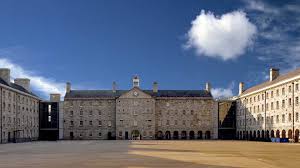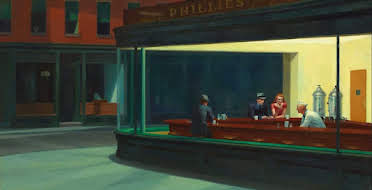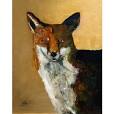The Beauty of Art Museums
Art museums are sacred spaces that house some of the most captivating and thought-provoking creations of human expression. These institutions serve as gateways to the past, present, and future, offering visitors a glimpse into the minds and hearts of artists from various cultures and eras.
A Journey Through Time
Walking through the halls of an art museum is like embarking on a journey through time. From ancient artifacts to contemporary masterpieces, each piece tells a story that transcends generations. Visitors have the opportunity to witness the evolution of artistic styles, techniques, and themes, providing a deeper understanding of our shared history and humanity.
An Oasis for Creativity
Art museums serve as oases for creativity in a fast-paced world. They offer a sanctuary where visitors can immerse themselves in beauty, inspiration, and introspection. Whether admiring a classical painting or pondering a modern sculpture, these spaces encourage contemplation and dialogue, sparking new ideas and perspectives.
Celebrating Diversity and Unity
One of the most remarkable aspects of art museums is their ability to celebrate diversity while fostering unity. Through their diverse collections and exhibitions, these institutions showcase the richness of global cultures and perspectives. They provide a platform for artists from all walks of life to share their stories and connect with audiences worldwide.
Preserving Heritage for Future Generations
Art museums play a crucial role in preserving our cultural heritage for future generations. By safeguarding priceless artworks and artifacts, these institutions ensure that our collective memory remains intact. Through conservation efforts and educational programs, they inspire appreciation for art and history among visitors of all ages.
Embracing the Power of Art
In essence, art museums are more than just buildings filled with artworks – they are gateways to imagination, emotion, and enlightenment. They invite us to explore new worlds, challenge our perceptions, and embrace the transformative power of art. So next time you step into an art museum, remember that you are embarking on a journey not just through galleries but through the depths of human creativity.
Exploring the Benefits of Art Museums: Reflection, Education, and Inspiration
- Art museums provide a space for contemplation and reflection.
- Visitors can explore diverse artistic styles and cultural perspectives.
- Art museums offer educational opportunities for all ages.
- They preserve and safeguard priceless artworks for future generations.
- These institutions inspire creativity, imagination, and emotional connection.
Challenges of Visiting Art Museums: Accessibility, Cost, Crowds, and Collection Diversity
- Limited accessibility for individuals with disabilities may hinder their full enjoyment of the artworks and exhibitions.
- Some art museums can be expensive to visit, especially for those on a tight budget.
- Crowds and long lines during peak hours can detract from the peaceful and contemplative experience that art museums aim to provide.
- Art museums may lack diversity in their collections, focusing primarily on well-known artists and established art movements, potentially overlooking emerging talents.
Art museums provide a space for contemplation and reflection.
Art museums offer a serene and contemplative environment where visitors can immerse themselves in the beauty and depth of artistic creations. These spaces provide a respite from the hustle and bustle of everyday life, allowing individuals to engage in introspection and reflection. By gazing upon artworks that evoke emotion and thought, visitors have the opportunity to ponder life’s complexities, explore different perspectives, and connect with their inner selves. Art museums serve as sanctuaries for quiet contemplation, inviting guests to slow down, appreciate the nuances of each piece, and find moments of profound insight and inspiration amidst the chaos of the world.
Visitors can explore diverse artistic styles and cultural perspectives.
Art museums offer visitors a unique opportunity to explore diverse artistic styles and cultural perspectives. From classical masterpieces to contemporary creations, these institutions showcase a wide range of artworks that reflect the richness and complexity of human expression. By immersing themselves in different artistic traditions and narratives, visitors can gain a deeper understanding of various cultures and histories. This exposure to diversity not only broadens their artistic horizons but also fosters empathy, tolerance, and appreciation for the interconnectedness of global creativity.
Art museums offer educational opportunities for all ages.
Art museums offer educational opportunities for all ages, making them invaluable resources for lifelong learning and cultural enrichment. Through curated exhibitions, guided tours, workshops, and interactive programs, art museums cater to diverse audiences, from young children to seniors. These institutions provide a platform for individuals to deepen their understanding of art history, aesthetics, and artistic techniques. By engaging with artworks firsthand, visitors develop critical thinking skills, creativity, and a broader perspective on the world around them. Art museums serve as inclusive spaces where people of all backgrounds can come together to explore, learn, and appreciate the beauty and significance of art.
They preserve and safeguard priceless artworks for future generations.
Art museums play a vital role in preserving and safeguarding priceless artworks for future generations. By meticulously caring for these cultural treasures, art museums ensure that the legacy of artists from the past is passed down to inspire and educate future audiences. Through conservation efforts, proper storage, and expert maintenance, these institutions protect invaluable artworks from deterioration and loss, allowing them to continue to enrich the world with their beauty and historical significance for years to come.
These institutions inspire creativity, imagination, and emotional connection.
Art museums serve as powerful catalysts for inspiring creativity, sparking imagination, and fostering emotional connections. By showcasing a diverse range of artworks and artistic styles, these institutions encourage visitors to explore new perspectives, think outside the box, and tap into their own creative potential. The immersive experience of viewing art in a museum setting stimulates the senses and evokes deep emotional responses, creating a profound connection between the viewer and the artwork. Through this process of engagement and reflection, art museums not only enrich our lives but also ignite a sense of wonder and inspiration that transcends boundaries of time and culture.
Limited accessibility for individuals with disabilities may hinder their full enjoyment of the artworks and exhibitions.
Limited accessibility for individuals with disabilities within art museums poses a significant con that can hinder their full enjoyment of the artworks and exhibitions. Without proper accommodations and facilities, such as wheelchair ramps, tactile exhibits, audio descriptions, and sign language interpreters, individuals with disabilities may face barriers in fully experiencing and engaging with the art on display. This lack of accessibility not only restricts their physical movement within the museum but also limits their ability to appreciate and interact with the artworks in a meaningful way. It is essential for art museums to prioritize inclusivity and provide equal opportunities for all visitors to access and enjoy the cultural treasures they hold.
Some art museums can be expensive to visit, especially for those on a tight budget.
For individuals on a tight budget, the cost of visiting some art museums can present a significant barrier to accessing cultural enrichment and artistic inspiration. The expensive admission fees and additional charges for special exhibitions or guided tours may limit the ability of budget-conscious individuals to explore and appreciate the diverse collections housed within these institutions. This financial constraint can prevent many art enthusiasts from experiencing the beauty and educational opportunities offered by art museums, highlighting the need for greater accessibility and affordability in cultural institutions to ensure inclusivity for all members of society.
Crowds and long lines during peak hours can detract from the peaceful and contemplative experience that art museums aim to provide.
The presence of crowds and long lines during peak hours at art museums can detract from the peaceful and contemplative experience that these institutions aim to provide. The hustle and bustle of large crowds can disrupt the serenity of the gallery spaces, making it challenging for visitors to fully immerse themselves in the beauty and significance of the artworks on display. Long lines at popular exhibits or entrances can also create a sense of impatience and frustration, detracting from the intended atmosphere of reflection and appreciation. Finding a balance between accessibility and maintaining a tranquil environment is crucial to ensuring that visitors can truly engage with art in a meaningful way.
Art museums may lack diversity in their collections, focusing primarily on well-known artists and established art movements, potentially overlooking emerging talents.
Art museums may face the con of lacking diversity in their collections, often prioritizing well-known artists and established art movements. This focus can inadvertently overshadow emerging talents and innovative artistic expressions. By predominantly showcasing works by renowned figures, art museums risk limiting the representation of diverse perspectives and fresh voices in the art world. Embracing inclusivity and actively seeking out emerging artists can enrich museum collections, offering visitors a more comprehensive view of contemporary artistic practices and fostering a dynamic dialogue between tradition and innovation within the art community.




